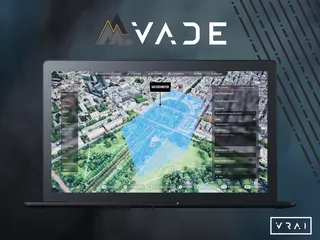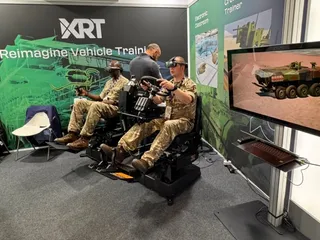Air Malta - An Airline in Transition
Contact Our Team
For more information about how Halldale can add value to your marketing and promotional campaigns or to discuss event exhibitor and sponsorship opportunities, contact our team to find out more
The Americas -
holly.foster@halldale.com
Rest of World -
jeremy@halldale.com

It is always challenging to move a flag-carrying legacy airline into a more modern and commercial world. That is even more the case when that airline is mainly government-owned, and subject to the almost inevitable bureaucratic mindset. Chris Long visits Air Malta to learn more about the changing face of the airline.
As the present Chairman of Air Malta, Dr. Charles Mangion says, when he was appointed to that position in 2017 the airline was experiencing the consequences of years of lack of investment. That showed up in lack of IT, an ageing fleet (as an early Airbus customer, the first A320 was ordered in 1987) and most importantly, poor morale and work ethic amongst many of the 1000-strong team. Critically, it was most evident in the poor productivity and loss-making accounts.
So, there was a lot to do to turn it around into a credible and profitable commercial entity - a process which is well on its way, but which is ongoing. The start of the turnaround was the approval of a five year restructuring plan by the European Commission. The wide ranging plan involved a reduction in capacity, early and voluntary retirement scheme and selling of non-core assets. A rebranding exercise was carried out and today the airline is aiming to consolidate itself as a prime Mediterranean carrier, benefiting from a central geographical location in support of the burgeoning tourist trade which welcomes holiday makers from Europe and the nearby African and Middle Eastern countries.
Investment is key, and with five million Euros pumped into IT alone, the team started to see immediate improvements. A gradual fleet renewal is underway, with the first A320neo due to arrive in June 2018, with an additional aircraft scheduled for each of the next five years. Few things stir up enthusiasm in an airline more than the arrival of new aircraft.
The reduced route structure inherited from earlier days is now subject to revision, 16 new routes have been introduced from 2017 and a 38% increase in frequencies to established routes expecting a 40% increase from local passengers. The incumbent Air Malta personnel are well able to manage this increase. Dr. Mangion sees opportunities in nearby Mediterranean islands - Sardinia, Corsica, etc. which are presently poorly provided with air services. With new aircraft and their increased capability, the potential to consolidate existing routes is obvious, and already load factors are improving. By a very simple measure of increased efficiency the daily operation per airframe has increased from 7.5 to 14 hours. Success breeds success, and the banks, once reluctant to become involved, now see opportunities for their own investment and support of the airline.
As mentioned, the workforce is the bedrock of any company, and with the new, more vibrant image which Air Malta projects at its home base, there is increased recruiting of well-motivated and keen young people of a much more savvy generation. The collective Agreements which cover a period of five years from January 2018 are expected to provide the industrial mobility and framework so vital to growth.
Training
Captain Antoine Fava, Chief Pilot Training and Nominated Person Crew Training is, as the title suggests, responsible for both Flight Deck and Cabin Crew training. In days past, both Aeroflot and Etihad carried out training and Line Operation Experience (LOE) with Air Malta before the arrival of their respective A320 fleets, so the connection with Airbus is of a long and robust nature. As might be expected however, the new style and vision creates new opportunities. With the fleet due to increase from nine to 15 aircraft there is a need for a build-up of numbers from the present 120 pilots and 250 cabin crew. Fava can now invest in new Airbus training, with both Learning Management Systems (LMS) and Quality Management Systems (QMS) provided by Pelesys. With the advent of Evidence Based Training (EBT) as a mainstream principle of training, Train the Trainer courses have already been delivered by the EBT Foundation, and the evolution of the instructor and regulator mindset from the old one-way flow of information to the more effective “facilitation” methodology has begun.
Cabin Crew Training
Air Malta is authorized to conduct initial cabin crew training leading to an EASA attestation. Initial and recurrent practical cabin crew training on the A320 have been carried out at what is now the Lufthansa Aviation Training centre in Munich, where a regular Air Malta flight ensures easy access for the trainees. Local fire fighting training is carried out at nearby complex. Until now the cabin door training has been carried out on the aircraft itself, when the daily utilisation rates were low. With the increased rates now being flown, access to the aircraft is not so easy, so there will probably have to be another solution.
Pilot Training
Historically most of the pilots come from Malta itself, and ab initio training has been carried out overseas - Pakistan initially, then the UK at both Perth and Cranfield. Once type-rated, the new First Officer is expected to complete 80 hours with a Safety Pilot included in the crew, and a further 400 hours (bear in mind that this is short-haul operation) total time before being released as a standard First Officer. The good news for the existing First Officers is that, rather than the present 15 year wait to command, the fleet expansion will offer more command upgrades. Those upgrade opportunities are initially based on seniority and a formal application by the candidate. The training to command requires closed book technical and operational exams, psychometric assessment, and then five scenario-based LOFT sessions, Line Operation Experience (LOE), followed by a further three LOFT sessions and 50 LOE sectors.
In this relatively small pilot workforce the 11 instructors are all qualified as TRIs/TREs, and operate as Line Operating Experience captains. That may well have to change as numbers increase with further captains approved for the LOE role.
New Equipment
With a small fleet there was initially no business case to build a training facility with a top-of-the-range full flight simulator (FFS), but with an increase in fleet size and access to funds, the decision was made to use a device which Avion planned to install for both the Air Malta task and other regional A320 operators. As Fava says, until now his crews have had to take four days (two days travelling) to complete recurrent training - one day to travel either side of the training days. Not only was there direct cost, but those crews were themselves disrupted, and were not available for normal operation. The prospect of having his locally-based crews simply report for a day’s training makes rostering simpler, and the feedback from the crews shows that they much prefer the simplicity of this new option, and both get more out of the training and actively enjoy it.
So - in a world where there is increasing choice in FFS providers - what was the solution?
Over the years CAT has been keen to investigate new technologies and players. We have followed the introduction of electric motion platforms, increasingly realistic visual systems, variations on instructor stations and increasingly sophisticated briefing/debriefing systems.
In response to the Air Malta requirement, Avion has installed its first “Plug and Fly” FFS. This device is of a light, modular construction, whose principle characteristic is the relatively modest infrastructure needed to support it. The device is installed in a compact and standardised building, which can be erected in one month, and because it houses on-board computers using Ethernet connections, it does not require the “waterfall” of cables which earlier designs use, but has a single umbilical electrical connection. Most striking of all, perhaps, is that it has integral stairs, so does not need the classic upper level “air bridge” to gain access. According to Fava an additional appeal is that, largely because of the lighter weight, the energy consumption is about a third of a comparable device. That has a great impact on the lifetime cost.
Bart Slager, CEO of Avion, points out that with the backing of the $5 billion VDL Group, based in the Netherlands, it was possible to create a clean-sheet design, using all the latest technology. He is keen to show that, by combining the modular construction (easier for shipping) with a motion system supplied by E2M Technologies, and the latest RSI visual system using an XT5 IG, the project has resulted in a simple and effective device.
VDL Group will also produce a flat panel trainer to support the training here, which will use any excess capacity to train additional airlines. Operating the new device in Malta is the responsibility of Simliner - which is located five minutes from the airport terminal and 170 metres from the headquarters of Air Malta.
This pattern will also build on the ab initio training packages offered by Avion in Dalaman, Turkey and Maastricht, the Netherlands. Those ab initio packages have what Marc Landsman, VP Sales and Marketing, claims is a unique offering - with the weight of VDL behind it, Avion Training can offer a loan to the ab initio student, to be repaid against future earnings. Patently there needs to be a shared agreement in selection, training and placing with an airline, but at least a (the?) primary barrier to new students, funding, is removed.
What is the Verdict?
When asked about the impact of the new aircraft and training equipment, Fava is very clear: initially he was uncertain if a new kid on the block FFS manufacturer would match the expectations. However, now that it has entered service he has a sigh of relief - the fine tuning before certification is “cosmetic”. He focuses on the lack of bridge, the “impressive” visual, and the overall view is that it is “fantastic”.
Whereas before he had to schedule training, and the attendant absence of crews, in the quieter winter season, he can now schedule training year round, whenever it suits him, with access to planning 12-24 months ahead. Air Malta, and its training, are now moving in the right direction.
Published in CAT issue 3/2018


